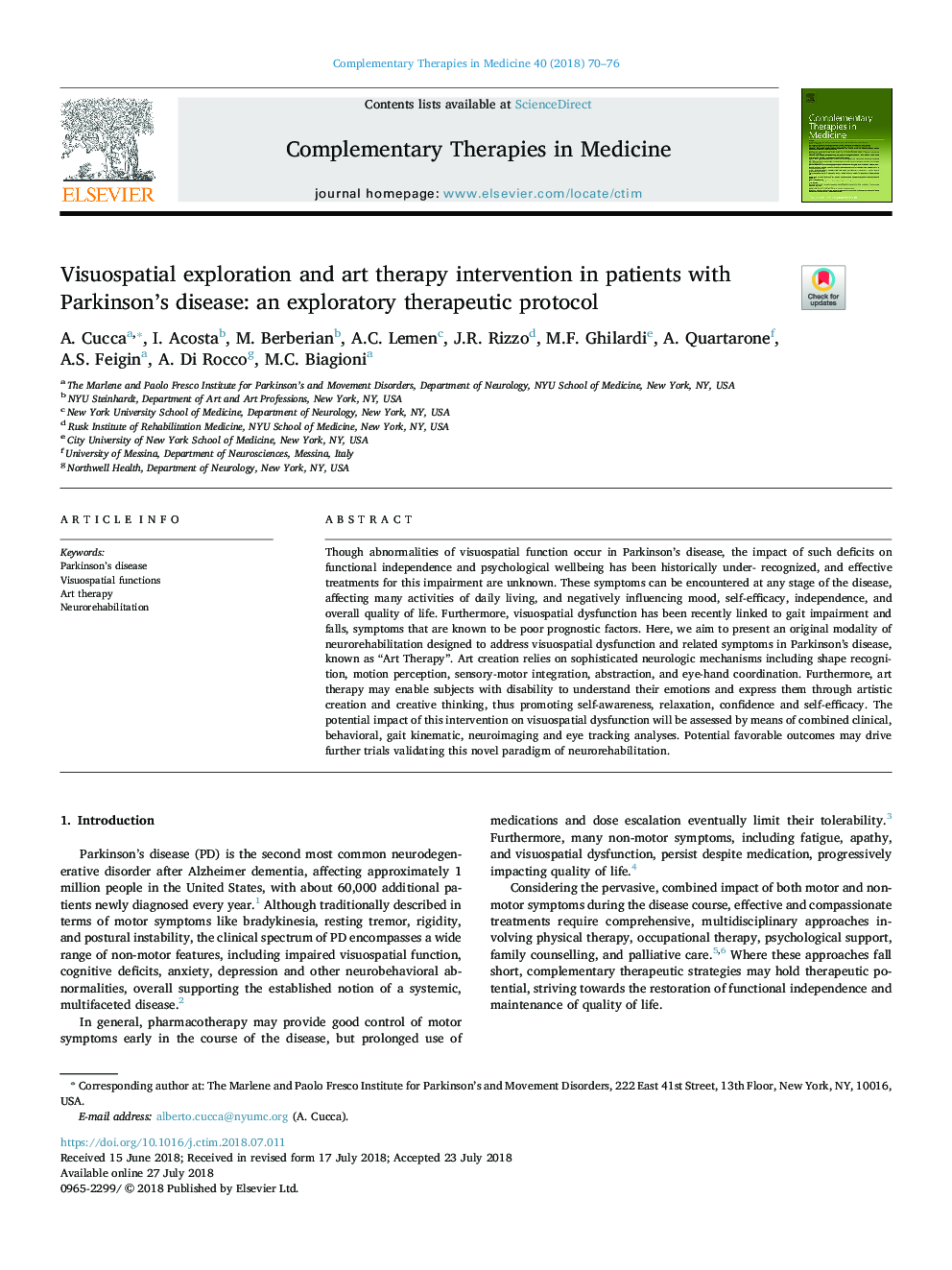| Article ID | Journal | Published Year | Pages | File Type |
|---|---|---|---|---|
| 8563244 | Complementary Therapies in Medicine | 2018 | 7 Pages |
Abstract
Though abnormalities of visuospatial function occur in Parkinson's disease, the impact of such deficits on functional independence and psychological wellbeing has been historically under- recognized, and effective treatments for this impairment are unknown. These symptoms can be encountered at any stage of the disease, affecting many activities of daily living, and negatively influencing mood, self-efficacy, independence, and overall quality of life. Furthermore, visuospatial dysfunction has been recently linked to gait impairment and falls, symptoms that are known to be poor prognostic factors. Here, we aim to present an original modality of neurorehabilitation designed to address visuospatial dysfunction and related symptoms in Parkinson's disease, known as “Art Therapy”. Art creation relies on sophisticated neurologic mechanisms including shape recognition, motion perception, sensory-motor integration, abstraction, and eye-hand coordination. Furthermore, art therapy may enable subjects with disability to understand their emotions and express them through artistic creation and creative thinking, thus promoting self-awareness, relaxation, confidence and self-efficacy. The potential impact of this intervention on visuospatial dysfunction will be assessed by means of combined clinical, behavioral, gait kinematic, neuroimaging and eye tracking analyses. Potential favorable outcomes may drive further trials validating this novel paradigm of neurorehabilitation.
Related Topics
Health Sciences
Medicine and Dentistry
Complementary and Alternative Medicine
Authors
A. Cucca, I. Acosta, M. Berberian, A.C. Lemen, J.R. Rizzo, M.F. Ghilardi, A. Quartarone, A.S. Feigin, A. Di Rocco, M.C. Biagioni,
